How the pandemic has changed the way we live and work around the world
During this difficult time, Chemistry World has been checking in with dozens of notable chemists around the globe to see how they are weathering the novel coronavirus pandemic. While different countries have had varying success controlling the spread of Covid-19, chemists everywhere are adjusting to a new normal. This includes, in most cases, interventions like physical distancing requirements, rotations that limit the number of people in the lab at once, and the near impossibility of travel, which have reduced research productivity and impeded collaborations across institutions as well as internationally.
Addressing this crisis has also required professors to learn to teach chemistry not only remotely, but also in very challenging so-called ‘HyFlex’ environments that involve accommodating students who are live in the classroom, live via the Internet, or watching a recording of the class asynchronously. In addition, it has created roadblocks for professors trying to reach tenure, students who need to hit milestones to complete their degrees, and for newly-minted chemistry PhDs wanting to network and find jobs.
At the same time, however, some actual benefits have arisen from the Covid-19 catastrophe. For example, the pandemic has spurred real innovation in chemistry education – forcing it to become more high-tech, to move beyond the lecture, and to reimagine exams as well as mentorship. The pandemic has also driven further changes that have meant chemistry courses and conferences are much more widely accessible, regardless of geography and resources. It has had a certain equalising effect on the field.
Many nations are in the midst of a second wave of the virus that has brought, or threatens to bring, increased restrictions to universities and their research labs. Chemistry students, professors and researchers everywhere are uncertain and worried about what the future holds. There is little doubt, however, that Covid-19 will change the scientific enterprise significantly and maybe even radically.
These are just eight examples of the dozens of stories we gathered as part of this series, and I’d like to thank all of the people involved; it has been a privilege to tell their stories.
Krystle McLaughlin

The pandemic threw a serious monkey wrench into the plans of Krystle McLaughlin, an assistant chemistry professor at Vassar College in New York. But slowly, things are falling back into place.
Labs at the small, all-undergraduate college closed in mid-March amid Covid-19, including McLaughlin’s – which uses macromolecular x-ray crystallography to study the structure and function of proteins. She had grown some beautiful crystals that were left sitting in the incubator, which eventually completely dried out and disappeared.
The closure was particularly stressful for McLaughlin because she took parental leave following her second child’s birth in summer 2019, which delayed the start of her research sabbatical from September to January. The sabbatical was supposed to allow her to focus on research without teaching duties, but that plan was ruined when her lab shut.
Next, Vassar cancelled its in-person summer research programme, so the projects McLaughlin planned to advance then were frozen. She felt hopelessly behind and worried about staying on track to hit the required tenure benchmarks. She also struggled to telework while homeschooling her older daughter and having zero childcare for her then 10-month-old.
Being back on campus has helped to reenergise and restart my research
Months later, things are looking up. Vassar’s labs reopened in September for the new academic year, with extra safety measures. McLaughlin has five students in her lab, continuing her research that was paused. Rotations haven’t been necessary since their schedules don’t all overlap.
For the teaching labs, biochemistry students are divided into two groups that alternate weekly between being the lab or watching the activities online.
‘My lab is up and running, so things are better than I expected,’ McLaughlin says. ‘Being back on campus has helped to reenergise and restart my research.’ Plus, her baby’s day care reopened in July, and her older daughter returned to school in early September.
In addition, Vassar has approved McLaughlin’s request for teaching release next academic year. ‘Normally, I would teach four classroom courses and also an intensive course that is lab work, but this lets me out of one classroom course,’ she explains. It remains unclear whether the summer 2021 research programme will be cancelled again, so her plan is to take that teaching release in spring 2022 to gain momentum into that summer.
The college has also granted McLaughlin – who has been there since 2017 – a one-year extension on her tenure clock, without penalty. This option was made available to all junior faculty.
Faculty usually have a fourth year review before going up for tenure in their seventh year. ‘Now I have an extra year to prepare for that fourth year review, which is the last review before tenure evaluation,’ McLaughlin explains. ‘That’s great, because I know I would not have enough research otherwise – I need more publications.’
Things are settling down for McLaughlin career-wise, but things still aren’t normal. She is originally from Trinidad and Tobago, whose borders remain closed, and hasn’t been back to visit family in more than three years. A planned trip there in April had to be cancelled. ‘I have no idea when I am going to see my family there again,’ she says. ‘Home feels so much further away now.’
Anya Gryn’ova
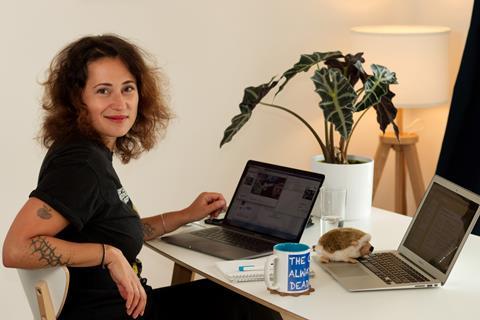
Anya Gryn’ova, a junior group leader in computational carbon chemistry at Heidelberg Institute for Theoretical Studies (HITS) in Germany, was relieved this summer when her job and life started returning to normal. But months later, there is a second wave of restrictions amid a rise in infections and deaths, says the Ukrainian native.
In the second week of March, as Covid-19 restrictions were introduced across Germany, HITS requested that only essential workers like security staff come to work. Everyone else, including Gryn’ova, began teleworking. But her research wasn’t much disrupted.
The two PhD students and two postdoctoral researchers in her group never stopped working. ‘Our scientific agenda didn’t suffer too much because, being theoretical scientists, all of the work is done remotely on supercomputers,’ Gryn’ova explains. After the shutdown, her group meetings transitioned online. She didn’t start coming back into the office until late April, and only on a limited basis.
Germany started slowly lifting restraints in early June, as infections fell, and Gryn’ova began coming to the office once or twice a week. She held regular face-to-face meetings with her research team into September.
But in November, they had to go back to online group meetings. ‘If you look at the curve of the cases in Germany, clearly there was a second wave,’ Gryn’ova says. Now she goes into the institute about once every two weeks, just when necessary.
Shortly after HITS’ clampdown in March, external visitors and guest speakers were prohibited. Those restrictions were lifted in principle on 1 September, but issues persist.
‘As the second wave started, Germany reintroduced countries onto our risk list, so we couldn’t host visitors from those countries,’ Gryn’ova recounts. ‘Connections that already exist continue – so I have collaborators in Heidelberg and people from overseas like colleagues in Australia, and we can continue working – but it is very hard to make new connections.’
One doesn’t have an opportunity to network right now
She was looking forward to networking in June at a graphene conference in France, but it was postponed due to the pandemic and then moved completely online. ‘One doesn’t have an opportunity to network right now, you can’t easily introduce yourself to someone after they give a talk,’ Gryn’ova says.
When it comes to her research, however, a computer virus in May proved more disruptive than Covid-19. The cyberattack targeted supercomputing facilities in Germany and across Europe, infecting the machines with cryptocurrency mining malware.
Although computing facilities at HITS were unaffected, Gryn’ova’s team relies on a large quantum chemistry cluster that was shut down for several weeks following the security breaches.
‘For about a month we could not run some of the computations that we typically run on that cluster,’ she says. ‘Not being able to use our big cluster was much more of a problem for our research than Covid-19,’ Gryn’ova adds, noting that her work is uninterrupted as long as the computers are running.
James Keeler
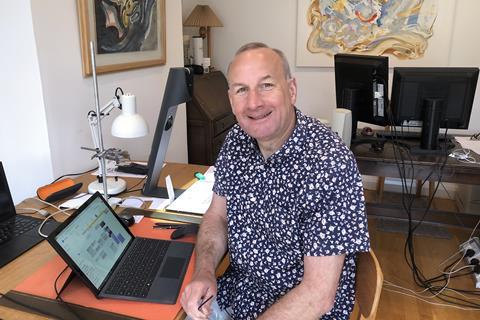
The head of the University of Cambridge’s chemistry department, James Keeler, told Chemistry World back in May that research was at a ‘standstill’ and that the department – which hosts about 300 researchers – had been ‘mothballed.’ At the time, he was working from home, as required by the government lockdown.
After closing in March due to Covid-19, Cambridge’s labs reopened for experimental research in late June, subject to precautions like social distancing and adequate ventilation, with a target of 30% occupancy or less. Since then the occupancy has gradually risen, but it is uneven across the department. For example, about 60% of researchers are back in synthetic labs, but the figure is much lower elsewhere. For theoretical chemists in particular the number ‘remains very low’, Keeler notes. ‘The synthetic chemists can’t do their work at home – if they are not standing at the fume cupboard they aren’t doing any work,’ he explains.
When the laboratory reopened in June, face coverings were not required, but as occupancy rose it was decided that they should be worn in public spaces. Now, with few exceptions, face coverings are required in all areas apart from when seated in the tea and lunch room.
Researchers can’t get immediate access to instruments
‘I think we are pretty close to where we were before in terms of research capacity,’ Keeler says. ‘We have gone from a lot of research being completely on hold to stuff moving forward,’ he adds. ‘It doesn’t look or feel the same – in the past, there would be people sitting in the tea room and in public areas, being social.’
There are some logjams, however, including problems accessing key instrumentation. ‘If you’ve got a room with five or six instruments in the past they might all be used at once, but now that is not really possible,’ Keeler explains. ‘So, researchers can’t get immediate access to instruments like they could previously.’
In addition, the university used to have a lot of visitors who would spend six months collaborating in a lab. ‘That hasn’t stopped completely, but certainly not as many people are coming and working in this way,’ Keeler says.
He is coming into work almost every day, primarily to teach. While lectures at the university are all online, practical lab classes continue in person. That was only made possible by cancelling first year lab courses. ‘Doing that made more space to spread out the other students, but it is a bit of a loss for the first year students this year,’ Keeler says.
‘When we started to open up in the summer, people were so happy to be back in the lab – getting on with their research and being together, and there was a sense that a very difficult period had ended,’ Keeler recalls. However, things have since become more difficult. In November, a surge of Covid-19 infections led the UK government to introduce another lockdown.
‘We didn’t know whether we would be shut down again for research,’ Keeler says. ‘There is a nervousness that we have got to get through the winter – it seems like a dark tunnel with a pinch point.’
Fung Fun Man
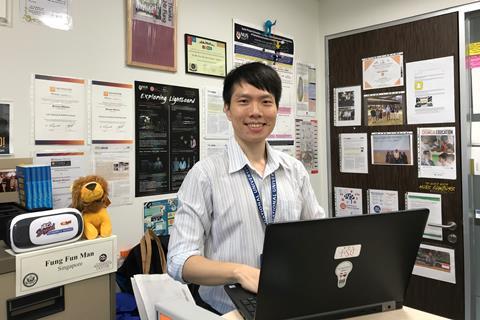
An instructor at the National University of Singapore (NUS) whose work centres mostly on chemistry education, Fung Fun Man was prepared when Covid-19 surfaced. The research group that he leads focuses on using technologies like videography and even virtual reality (VR) to teach chemistry.
Since 2012, he has taught hybrid classes, which are half in-person and half online. The Sars virus, which hit places like Singapore and China hard in 2003 when Fung was a teenager, made a big impression on him. ‘I had in mind that one day we just might need these kinds of tools,’ he recalls.
After spending years researching the most effective and high-tech methods for teaching chemistry, often remotely, Fung found that his expertise was suddenly highly sought after when the pandemic caused universities worldwide to switch to remote instruction.
Chemists and educators everywhere have reached out to Fung, and he appreciates the positive attention after years of enduring criticism that he is too futuristic. Fung is fielding numerous invitations to deliver online talks, primarily about using technology for more effective teaching.
The teaching equipment he has recommended for chemistry, depending on the needs of the particular course, include VR and 360 cameras, as well as devices like the Lightboard that allows instructors to write their notes while facing students, drones that can help create next-level educational videos, and social media applications like Instagram to which short videos can be posted that capture students’ attention.
70% of students prefer to learn online
One example of the usefulness of such technology to teach chemistry is an application Fung’s team has developed that allows students to better visualise biomolecules and complex structures in 3D using augmented reality.
A few months ago, Fung surveyed his students and found that about 70% prefer to learn online because they save commuting time and get more sleep. ‘They said the trade-off is worth it,’ he says.
Fung is adamant that professors and researchers everywhere should assume that online teaching and learning is the new normal. ‘I suspect that there is a huge group of lecturers who think that they can just make do with minimum technology, and just go online and teach to get by until next semester,’ he says. ‘Now is the time to take leadership, find your moral courage to embrace technology and actively learn to support university students during hybrid teaching.’
James Canary
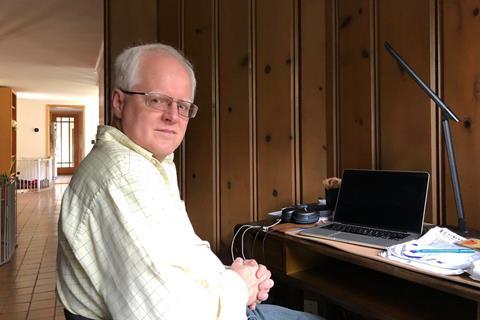
Organic chemist James Canary has chaired New York University’s (NYU) chemistry department for about six years. He also runs a research lab at the university that designs, synthesises and studies molecular switches of various types. When Covid-19 struck New York City in March, the university’s research labs closed down. Researchers had to telework, and all classes went to remote instruction.
The labs gradually reopened in July and August, and have since been operating at 50% occupancy with strict physical distancing – defined as six feet between individuals – and public hygiene rules that involve mandatory mask-wearing unless alone in an office, as well as onerous cleaning protocols that involve wiping down of common areas multiple times daily.
‘One impact of the shutdown and interruption of research will be delays,’ Canary says. ‘I feel particularly bad for students that were hoping to transition to new research positions this year, as many institutions have ongoing hiring freezes.’
Canary is not quite sure how much research progress is hindered at NYU, since different labs seem to have adapted to the situation in different ways, but notes that students are not able to spend as many hours in the lab as usual.
In fact, the most senior student in his lab went home to China over the Chinese New Year back in January, and has been stuck there ever since. His entry visa back to the US was delayed, and the number of Covid-19 cases exploded in China while he was waiting on the paperwork. ‘Then, the US shut off the opportunity for people from China to come here, so he’s still over there,’ Canary recounts. Earlier in the pandemic that student was isolated at home, but is now able to do research at the NYU campus in Shanghai, using some of its facilities.
Working here may be one of the safest places right now
The new semester at NYU began in early September in mixed mode – some courses are entirely online, others entirely in person, and some are blended. In the chemistry department, the largest number of students appearing in person are those taking lab courses. However, even those are blended, with some students doing hands-on labs and others opting for online equivalents.
The university’s chemistry department has 41 faculty teaching about 2500 students per semester. Nearly all departmental meetings are still online, although one-on-one meetings are allowed with social distancing.
NYU was in the process of significantly renovating its chemical biology facilities, and some of that work has been delayed but will hopefully pick up soon, Canary says.
He suggests the university is in better shape than many of its sister institutions – not only are positive test rates in Manhattan lower than most of the rest of the US, but those at NYU are ‘extremely low’. All students and employees must be tested every other week.
‘Working here may be one of the safest places right now,’ Canary says.
Akash Deep Biswas

Akash Deep Biswas is from Tezpur, a small town in northeast India on the banks of the Brahmaputra river. A scholarship from Scuola Normale Superiore in Pisa allowed him to come to Italy in December 2016 to pursue a PhD. The computational chemist was due to submit his thesis by October, but Covid-19 derailed his plans.
His thesis work was focused on the hydration shell of 17 proteins, but Biswas decided in February to start concentrating on the Sars-CoV-2 main protease as a drug target. After publishing a paper in mid-February, he and colleagues moved to studying the Covid-19 hydration shell, specifically trying to identify a molecule that can inhibit the protease and thereby prevent the virus from replicating itself in a human host.
‘I was seeing that every day people are dying, so as I have expertise in drug development it was my idea to change direction,’ Biswas told Chemistry World back in February. ‘I have taken a big risk by switching course and spending the majority of my time now working on Covid-19 … but I am ready to do anything for humanity,’ he said at the time.
Indeed, the pivot turned out to be problematic. Biswas had to request a six-month extension, and it was granted at the end of September. His thesis is now due by 30 April, and he thinks that’s enough time.
Almost every day I find a rejection letter in the mail
This is not how Biswas imagined spending the last year of his PhD, which he assumed would involve securing a job. Because there have been no live scientific conferences since early 2020, and it’s not practical or feasible to travel anywhere, he has found it nearly impossible to network for employment.
‘It has been really, really difficult to arrange meetings or interviews that could lead to a job offer,’ Biswas explains. ‘The competition is crazy right now because so many people are losing their jobs, and there are now fewer postdoc openings at universities everywhere.’
In the last few months, he has applied for more than 30 postdoc positions at universities across the world, and nearly as many industry posts. ‘That’s 50 or 60 job applications in total, and I have had 100% rejections,’ he says. ‘Almost every day I find a rejection letter in the mail.’
Biswas has tweaked his resume and cover letter, and is poised to begin another phase of applications soon. Under pressure as the sole provider for his ageing parents and brother back in India, he’s willing to go anywhere that he can find a job.
John Woodland
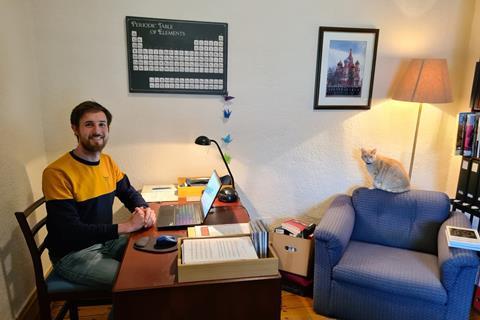
A postdoctoral medicinal chemist at the University of Cape Town in South Africa, John Woodland works at H3D, the only integrated drug discovery platform in all of Africa. His research, which focuses on designing and synthesising potential drug leads for infectious diseases like malaria, came to a standstill in the first few months of the pandemic.
Shortly after the first Covid-19 case surfaced in South Africa in early March, the government implemented a three-week ‘hard’ lockdown and the University of Cape Town’s campus was closed. Initially, nobody was allowed to leave home unless it was to buy groceries or get medical care. Even outdoor exercise was prohibited.
Restrictions in South Africa slowly eased up, and by July Woodland’s lab was back online – albeit in morning and afternoon shifts to prevent overcrowding and with mandatory physical distancing, facemasks and regular wiping down of work surfaces.
Containing lab work in the first few hours of the day works out well
‘Essentially everything is mostly back to normal,’ Woodland says. ‘There are 20 or 30 chemists using the lab on a daily basis, and there have been no cases of work-related transmissions.’
He is on the morning shift, leaving home around 7am and returning around 1pm. By then Woodland is really thirsty and hungry because eating and drinking are discouraged on campus.
Containing lab work in the first few hours of the day works out well because ‘you make the most of your chemistry and then have uninterrupted computer time to get the deep work done at home,’ he says. If and when things return to normal, Woodland and many of his colleagues are interested in continuing this schedule.
A downside, however, is that communication is not as fluid as it was because his team is not all in the lab together. ‘If I need to work with colleagues in the afternoon shift that has to be done through lengthy email threads or WhatsApp chats,’ he notes. ‘Or, we can sometimes meet up at interchange time between the two shifts.’
Woodland is happy that his group has been able to continue its work, and misses the person-to-person interaction and 3D conversations with colleagues when he’s working at home on things like grant proposals and data analysis. ‘You still feel cut off,’ he says. ‘But having a chemical product in your vial or flask at the end of the morning, that is very satisfying – wet chemists just love working with matter and molecules.’
Mélissa Nehme, Lucía Gallego and Joe Wood
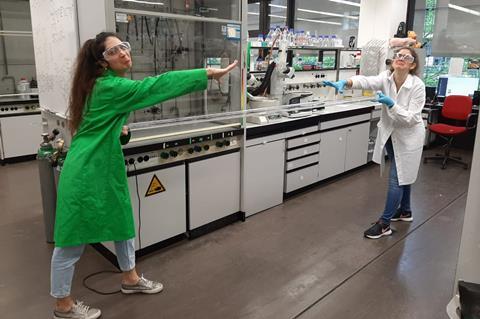
A small chemistry research group at the University of Zurich in Switzerland, which merges organic synthesis with supramolecular chemistry through molecular topography, had its work entirely interrupted when one of its members was diagnosed with Covid-19 and all five had to quarantine for 10 days in October.
‘My boyfriend had it so I got tested and came back positive for the virus, but my symptoms were very mild – I didn’t even have a fever,’ recounts Mélissa Nehme, a PhD student at the university. Since then, there is a requirement that the various research teams have no contact with one another.
Nehme remained in isolation for two full weeks, and during that time research was stopped. The group was able to come back together in late October.
‘Up until when Mélissa got the virus we were only wearing masks outside of the lab, in areas where the air wasn’t well-ventilated, but since then we wear masks all of the time,’ explains Joe Woods, a PhD student on the team.
My symptoms were very mild – I didn’t even have a fever
‘In terms of research productivity, the pandemic hasn’t had as big an impact here as it has in other countries,’ he adds. ‘Switzerland has allowed us to stay in the lab and continue research.’ The country has avoided some of the stricter quarantine measures neighbouring countries imposed.
On Friday 13 March, the Swiss government cancelled all university classes, and all labs were shut down. Nehme and the rest of her group were allowed back into the lab the following Monday, but the university closed down entirely two days later. All research groups returned to the university in late April, with social distancing.
Lectures remain online, but lab courses are still in-person. For example, general chemistry labs taught by PhD student Lucía Gallego, who is also part of the research group, are face to face. These sections have 20 or more students, but they all wear masks, have plenty of space to remain separated and adequate ventilation, Gallego says.
Woods approves of Switzerland’s moderate measures to combat Covid-19. ‘It gives the responsibility to the people to wear masks and keep distance,’ he says. ‘There have been relatively few cases at the university – including Mélissa, there have only been three cases among researchers.’ But he acknowledges that Switzerland has one of the worst Covid-19 infection rates in Europe and the world.
Nehme agrees that there is no cause for stricter measures. ‘I would do anything but stay at home and get locked down again,’ she says. ‘Just isolate if you have symptoms.’

Chemists amid coronavirus
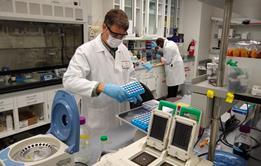
How chemists around the world are coping with life and work during the Covid-19 pandemic
- 1
 Currently
reading
Currently
reading
Chemists amid coronavirus: 2020 in review
- 3
- 4
- 5
- 6
- 7
- 8
- 9
- 10
- 11
- 12
- 13
- 14
- 15
- 16
- 17
- 18
- 19
- 20
- 21
- 22
- 23
- 24
- 25
- 26
- 27
- 28
- 29
- 30
- 31
- 32
- 33
- 34
- 35
- 36
- 37
- 38
- 39
- 40



















































































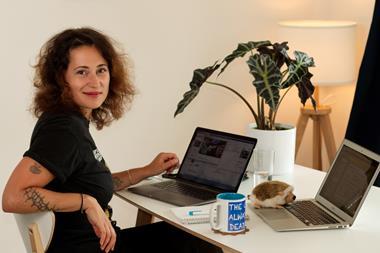





No comments yet